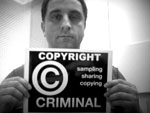When Copyright Meets the Classroom
Question

If I create a PowerPoint for use in my classroom, can I protect myself from copyright infringement by simply adding the URL of the site in which I found the document at the bottom of the page?
Answer
The very short answer is that copyright is complicated. For educators, though, there are some basic things to know and guidelines to follow that make it less scary. Citing your sources is always a good idea. Beyond crediting your source, you are modeling a key skill for students: always pay attention to the source of information, primary and secondary.
Fair use is an educator's best friend. Start with the official policy on fair use to learn more about copyright and classroom use. Materials in the public domain, or no longer covered by copyright restrictions, are also valuable to teaching. Learn more at Beyond Google Searching on copyright and searching for resources in the public domain.
Generally speaking, if you are using a copyrighted item for educational purposes with no financial gain, you're off to a good start for fair use. That said, if you plan to make the PowerPoint available in any other way (such as online for students to download), it is more complicated. One of our blog entries, "Copyright: Finding Images to Tell the Story of History," offers links to a wide variety of resources for examining copyright, as well as for introducing your students to the concept. Don't be deterred by the fact that this post focuses on image copyright. There's still a wealth of relevant information!
Let's cut to the chase. Maybe you really just need to know about one document or image. The best way to get started is to check if the work is in the public domain, using a copyright term chart. Was the document published? If so and if publication took place prior to 1923, copyright has expired, and the work is public domain. Use the chart to look up the document in question. If the document is not public domain, you can also try the University of Minnesota Libraries' tool, Thinking Through Fair Use. It provides a handy list of check boxes to help you determine if your purpose and item of choice can be considered fair use. The "Get summary" link is not currently working, but the end result should still give you a decent idea of whether or not you would be acting under fair use or, alternatively, violating copyright.
When looking into copyright, there are a number of issues to consider. Some of the most pertinent include:
- Type of material under consideration, such as recorded music, documents, song lyrics, and images. The rules vary for different media.
- How the material is being used. Will you be making any form of commercial profit? Is the intent purely educational? Will there be one copy or more? Will those copies stay in the classroom, or be available digitally?
- What copyright is and isn't. A good go-to place for that issue is the United States' Copyright Office's Copyright Basics. The short version is that copyright protects products of artistic merit. Note the example that dance choreography can't be copyrighted unless it is in some way notated—thus, requiring a physical product. Similarly, songs can be under copyright if they have sheet music, written lyrics, or recordings.
The best thing to do is to take the time to individually assess your sources and your use of them. Luckily for educators, the concept of fair use is a great asset in bringing unique sources to the classroom.
